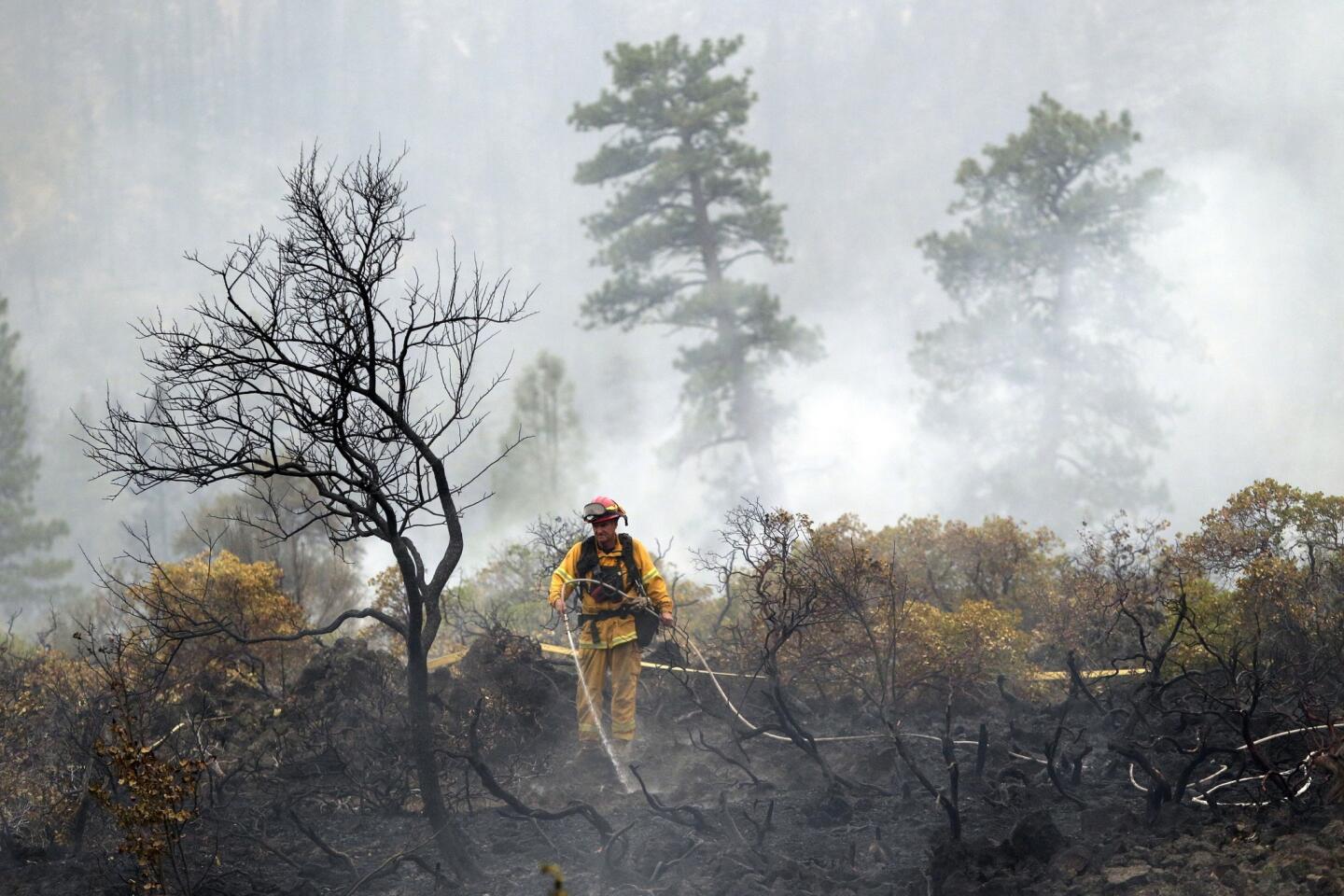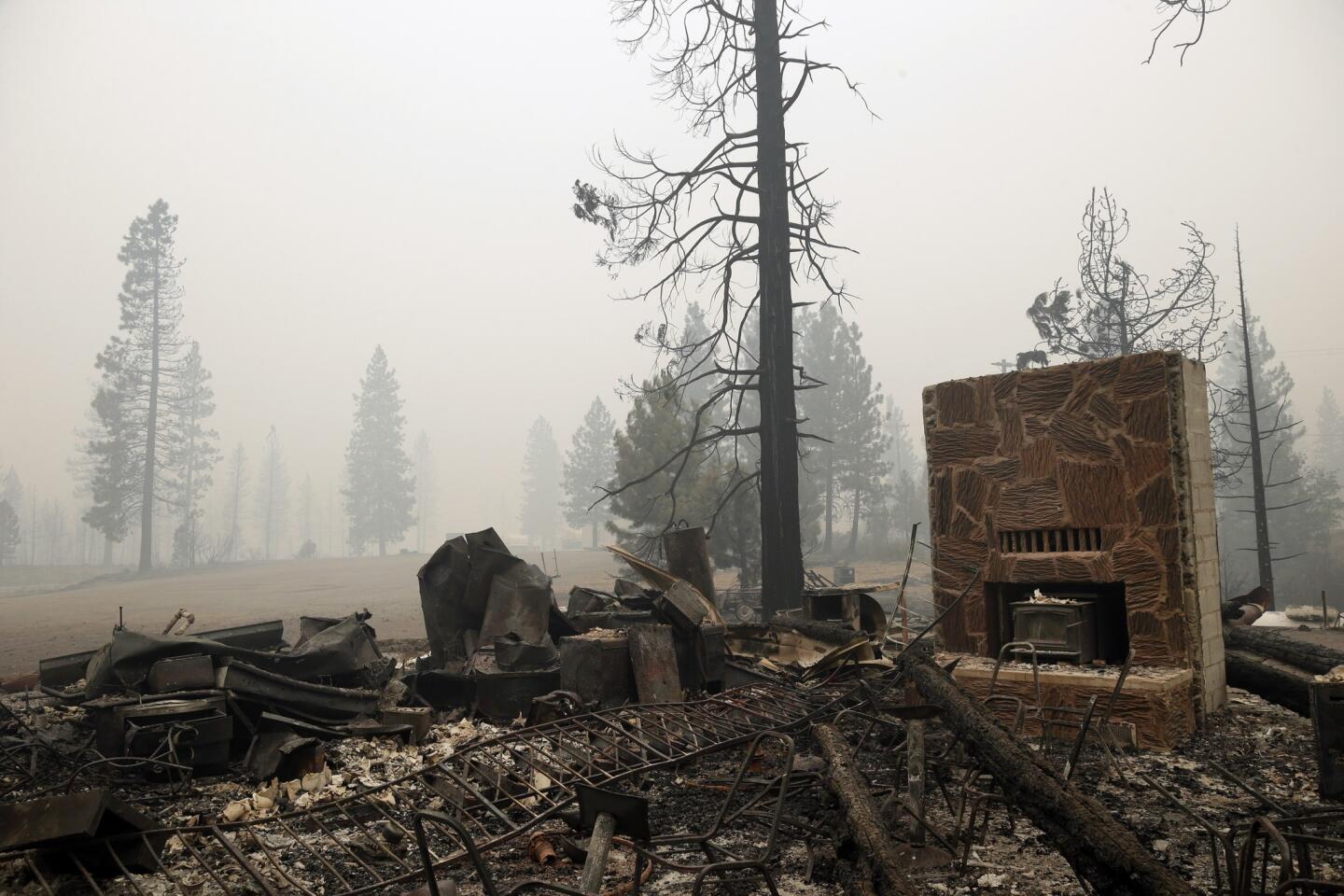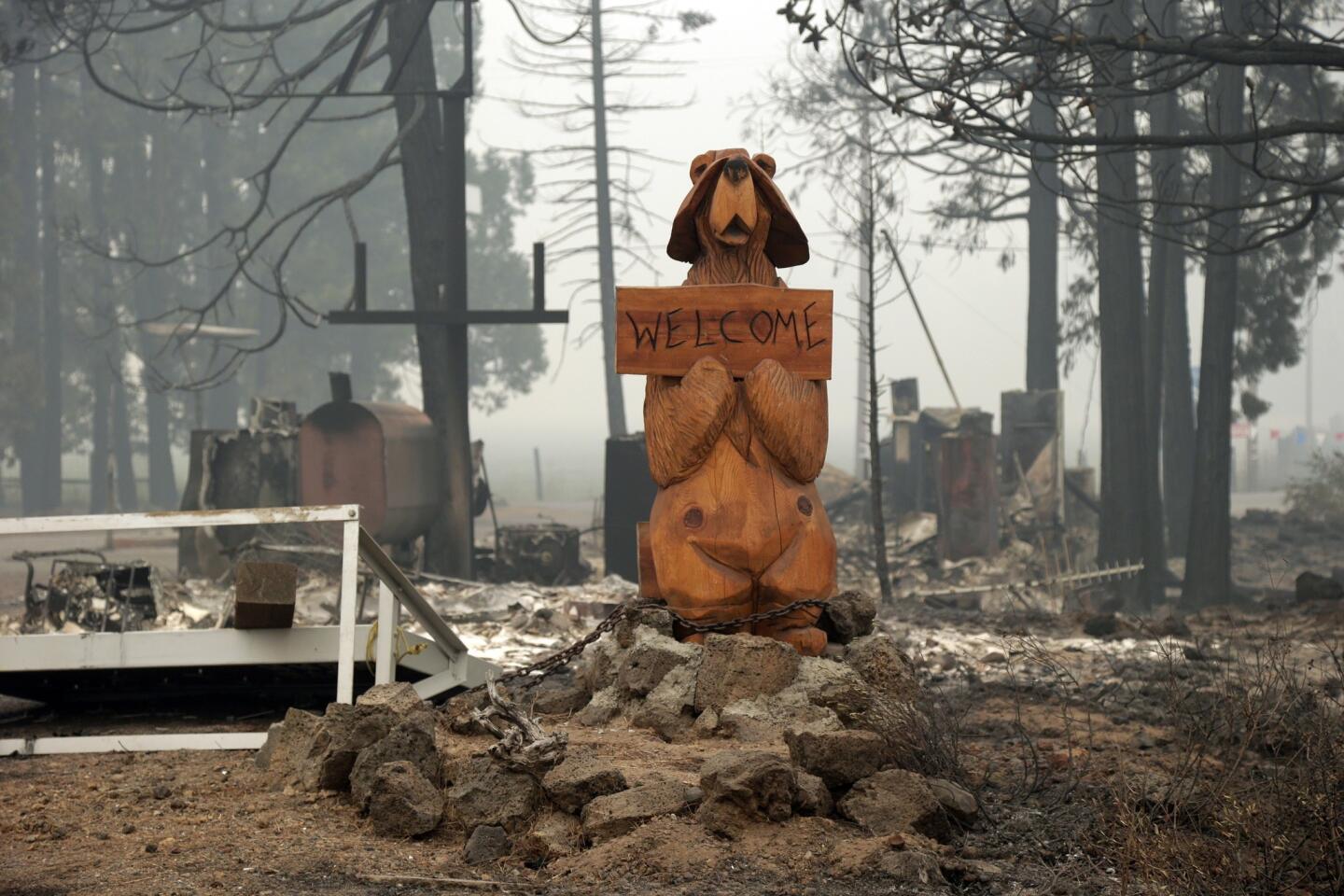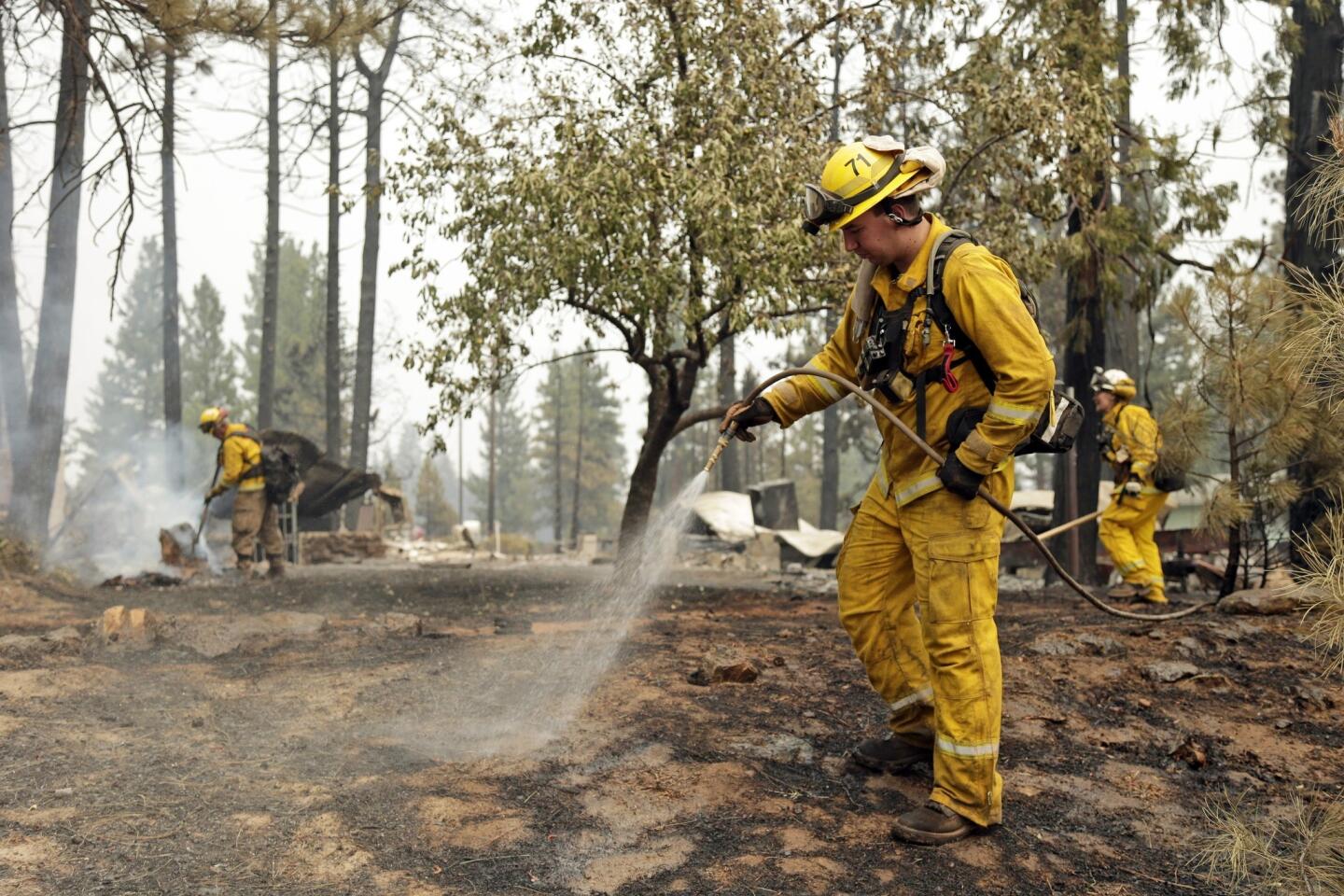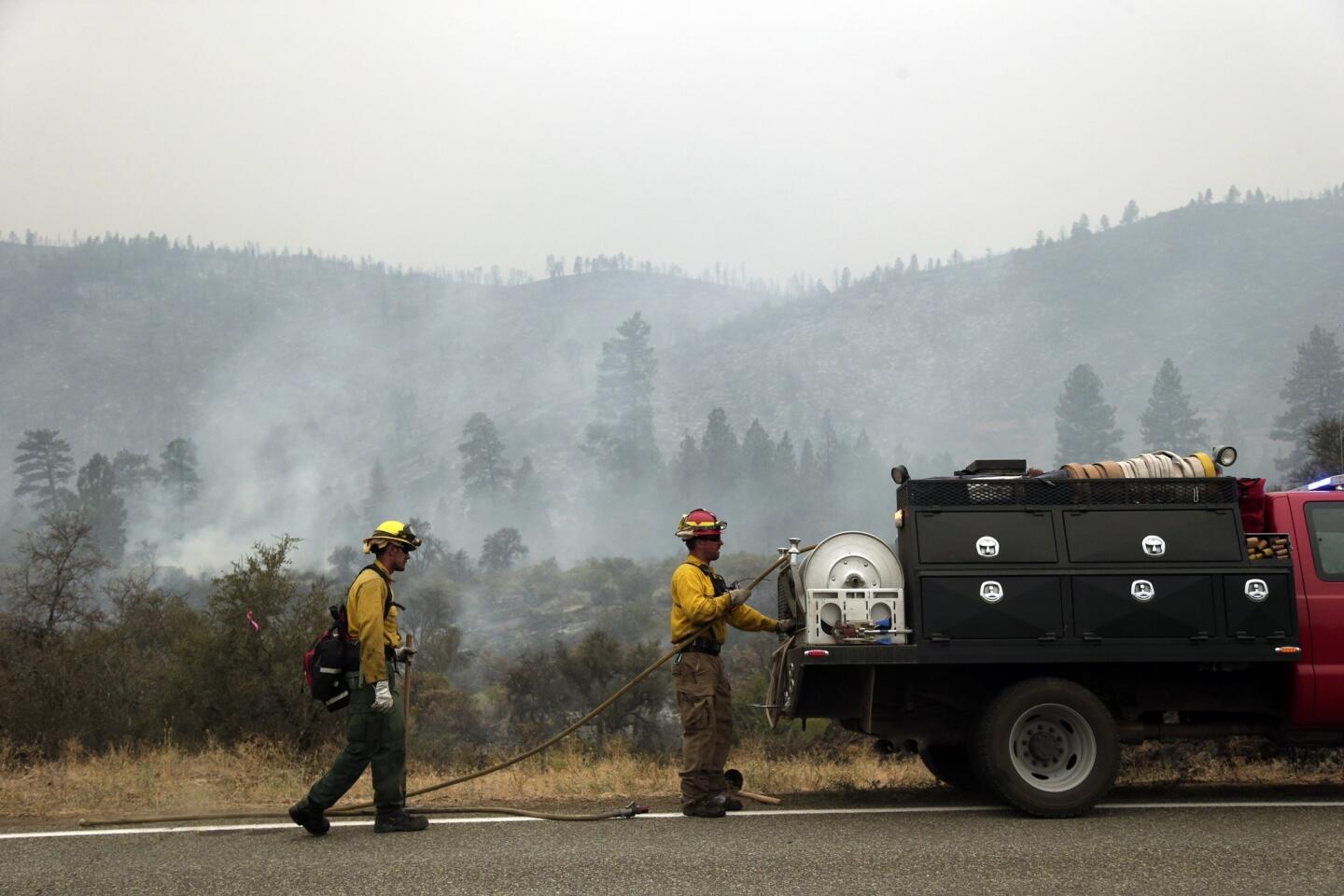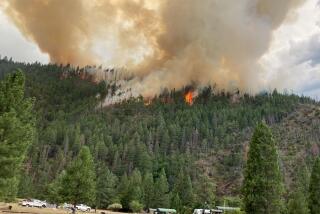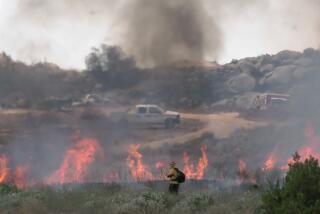California wildfires: Storms curb blazes as lightning starts new ones
Cooler weather and increased humidity are helping firefighters in Northern California battle a series of massive wildfires, the National Weather Service reported.
At the roughly 13,700-acre French fire, for example, officials reported Tuesday that cooler weather overnight allowed fire crews to make “good progress” along the active northwest perimeter, where the community of Arnold Meadow in the Sierra National Forest has been under evacuation.
But while the intermittent rain and lower temperatures are welcome, the lightning they can come with aren’t.
In recent weeks, lightning has been blamed for dozens of brush fires in state and national forest lands in Central and Northern California. Gov. Jerry Brown declared a state of emergency over the weekend, citing the effects of the fires, including overtaxing firefighting resources.
Thunderstorms have sparked 26 wildfires in Northern California since Aug. 1, the U.S. Forest Service reported.
The potentially destructive combination of drought and lightning prompted the National Weather Service to put much of the northernmost area of the state under a red-flag warning Tuesday from 1 p.m. to 11 p.m. Southern Oregon was also on high alert as the unstable weather system moved north.
Meanwhile, wildfires already burning in Northern California are not expected to be fully contained for weeks, the Forest Service reported.
The 40,000-acre Bald fire and 28,000-acre Eiler fire in Shasta County aren’t expected to be contained until at least mid-August. And a 36,000-acre fire burning along the Oregon-California border is only 30% contained since igniting last week.
Other large wildfires have also pockmarked the Sierra, Klamath and Tahoe national forests, as well as Yosemite National Park.
The abundance of thunderstorms has been caused by an unusual flow of monsoonal moisture from the southeast. The storms have sparked wildfires in some areas while delivering powerful bursts of rain that sent rocks and mud cascading Sunday through mountain towns in San Bernardino County, killing a man and destroying several homes.
Changes in ocean temperature thousands of miles away have delivered the atypical summer weather to Southern California, driving up humidity and causing sporadic destruction.
Warm equatorial water in the Pacific, from mainland Mexico to Peru, normally pumps monsoonal air up the Sea of Cortez into the Southwest, with mountains blocking it from the coastal plains of Southern California.
But this year, the ocean temperatures are higher than normal, climatologists say, producing a more powerful “tropical wave” that made it all the way to the coast.
For breaking California news, follow @JosephSerna.
More to Read
Start your day right
Sign up for Essential California for news, features and recommendations from the L.A. Times and beyond in your inbox six days a week.
You may occasionally receive promotional content from the Los Angeles Times.
